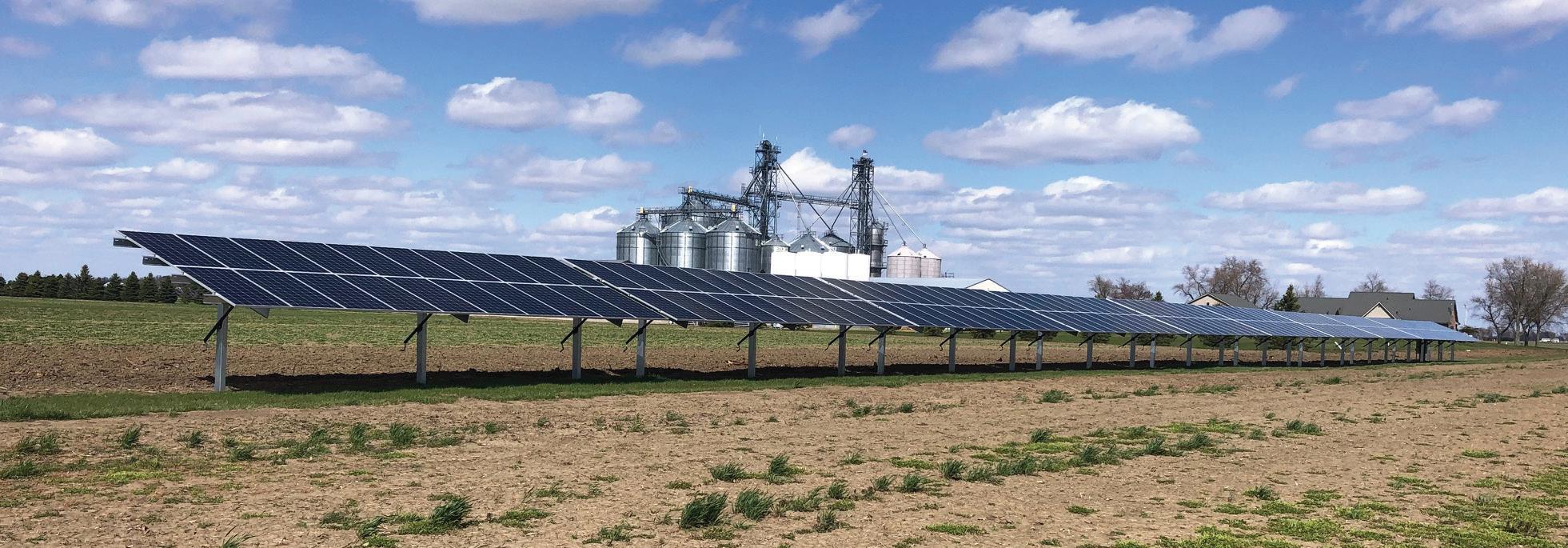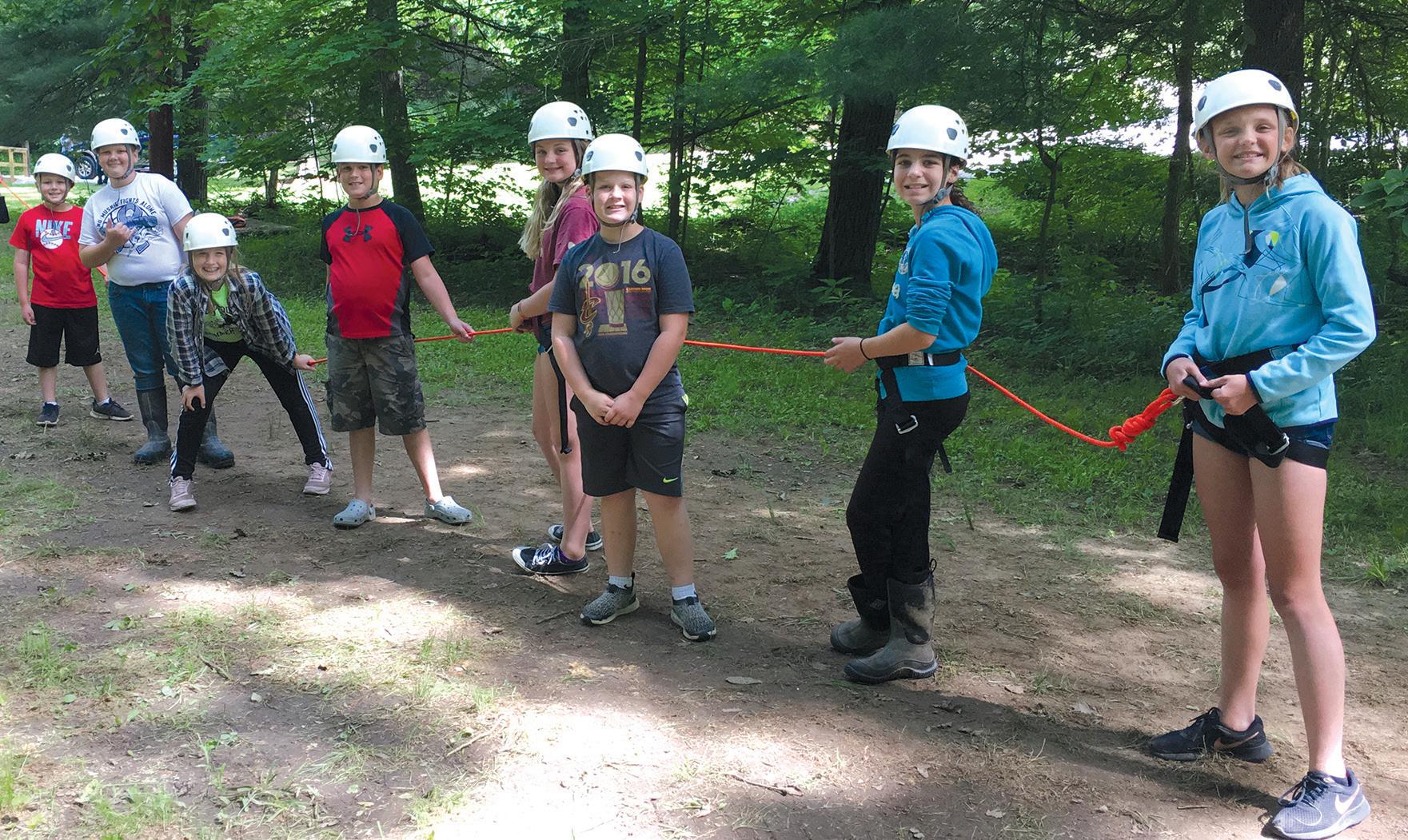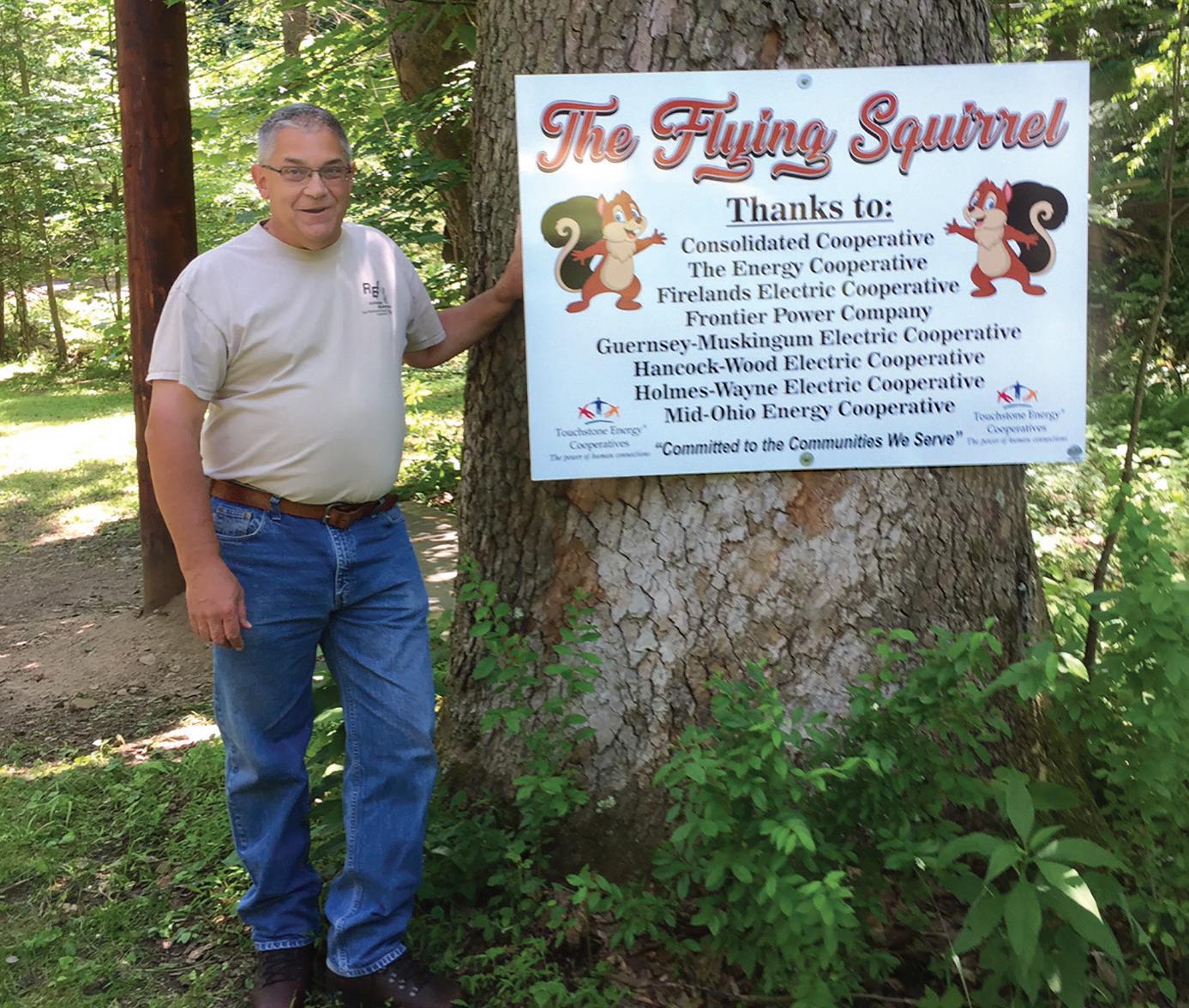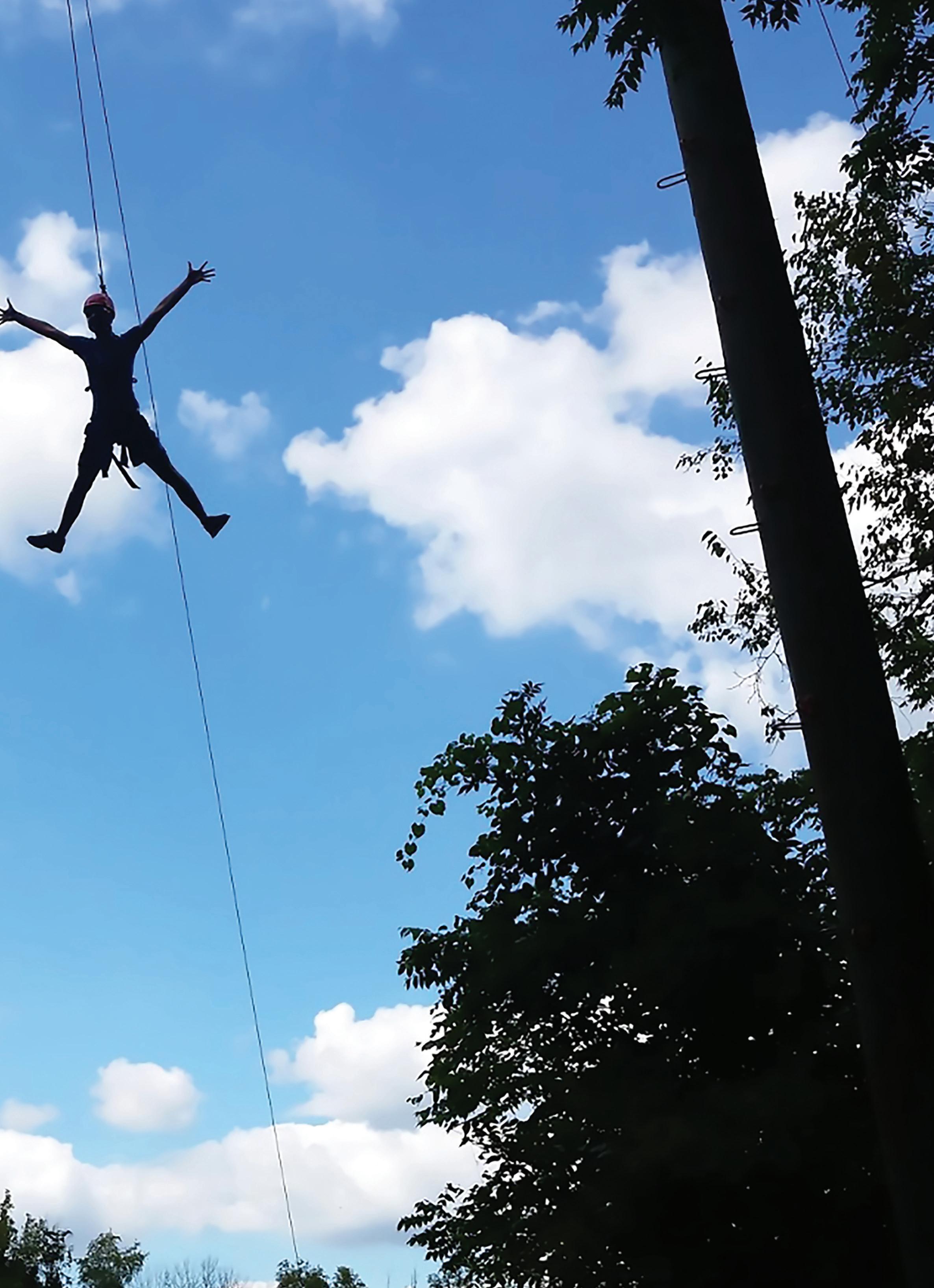
8 minute read
POWER LINES
Going solar? Your co-op’s trusted advisors should be involved early on.
BY JEFF MCCALLISTER
Nick and Amanda Kelly knew they were making a long-term investment, one they hoped would benefit not only their wallets, but the entire planet. After a search they had begun to think would never end, they finally found their dream house on an ideal parcel of land in north-central Ohio. As they settled in, they began seeing advertisements for the installation of solar panels that sounded almost too good to be true. “It was perfect,” Amanda Kelly says. “We could get a system with no money out of pocket that would save us money on our bills now, and by selling the extra electricity the panels generated, we’d even have a small income stream — especially once we paid off the loan. Saving money, saving the planet for our kids — it was everything we wanted.” Today, the Kellys are in a battle with the solar company to get the panels removed and their investment returned. The salesperson, they say, wildly exaggerated the production potential of their system and subtly pressured them into signing a contract before they had a chance to investigate all the details and promises of the deal. Now, between the loan payment and their regular electric bill, the total they spend each month for electricity has quadrupled. “It’s like most things that sound too good to be true,” says Andrew Finton, energy advisor for North Central Electric Cooperative, of which the Kellys are members. “The solar company either didn’t have or didn’t give them any information that is specific to connecting to the (co-op) system, and it would have made a big difference — things like our on- and off-peak rates and our demand charge that are designed to make our billing fair to all of our members. The numbers they were using to estimate the savings on their bill weren’t even close to real life.”
The co-op’s message: “Talk to us first.”
“People somehow think that we might be anti-solar because we sell our own electricity,” Finton says. “They don’t remember that we’re not for profit, that we have always been their trusted energy advisors. I can’t tell you how many times I’ve gone into someone’s home and showed them all kinds of ways that they could use less electricity. How many for-profit companies teach their customers how to use less of their product? Not very many. “Those solar companies like to get that contract signed before the member even has a chance to talk to us about it, and then it might be too late,” he says. “I would never tell anyone they can’t get solar panels for their home; I just want to make sure they have all the information they need to make a good decision.”
Dennis Tietje, his son, Chris, and brother, Ervin, who operate Tietje Brothers Farm near Deshler, took advantage of grants and tax incentives to install 320 solar panels to help power their homes and farm operation.



A solar system made good economic sense for Dennis Tietje and his family, who live near Deshler and are members of Hancock-Wood Electric Cooperative — though it wasn’t when they first considered it. “Five years ago, a guy approached me and wanted to talk about installing a solar array,” says Tietje, who farms 6,500 acres with his brother, Ervin, and his son, Chris, and uses a large electric load to dry the wheat and corn he harvests. “I said right away that I needed to talk to the co-op to talk about the numbers. It turned out that it just didn’t make sense, so we walked away. We wanted to improve our operation’s sustainability, so I checked again about a year ago, and as it turned out, the price of the system was about half of what it had been, it was more efficient, and there were grants available and a big tax incentive. The co-op looked at all the numbers and was able to confirm that it seemed like a good idea.” Dennis installed 80 panels between his house and the farm shop, Ervin had 40 installed on his house, and they had another 200 installed for the grain drying operation. With the grants, tax credits, and some luck with the weather, the panels will pay for themselves within five years. “Co-ops are not generally anti-solar, but we just want to help folks make sure it makes sense,” says Ryan Goolsby, senior engineer at Hancock-Wood Electric. “We know that not everyone is doing it necessarily for just monetary reasons, but costs need to be transparent and projections need to be realistic.” In fact, electric cooperatives have supported home power installations for years. Buckeye Power, the cooperative generation provider, has even worked to simplify the process and to make cooperative policies and fees even more transparent. “The solar companies might know about solar installations, but there’s no one who knows more about our system and your bill than we do,” Finton says. “If you’re considering solar for your home, just make sure to call your co-op and make sure there won’t be any surprises down the road.”
Ohio cooperatives collaborate to bring Flying Squirrel to Camp Ohio.
BY PATTY YODER
FLYING HIGH
Summer camp means a week of adventure, and Camp Ohio does not disappoint. Every year, hundreds of 4-H’ers travel to Licking County to test their courage on a high ropes course, make wood-burning crafts and tie-dye T-shirts, and form lifelong friendships.
While the 2020 summer camp schedule may be altered because of the coronavirus pandemic, there’s a new feature at Camp Ohio that has gained instant popularity and will be used well into the future.

In 2016, Camp Ohio’s board of directors began searching for a new activity. Board member and Muskingum County extension educator Jamie McConnell wanted to put something exciting near the center of the hilly 544-acre campground so more kids would see it and want to try it.
On a regional bus tour of other camps, McConnell discovered the Flying Squirrel, a rope and pulley system attached to two utility poles. The activity goes like this: A group of kids on one end of the rope works together to lift a securely harnessed camper on the other end of the rope off the ground and some 30 feet into the air. The flyer swings back and forth for a bit before spinning safely back to earth.
It seemed like a perfect activity for Camp Ohio, but the $10,000 price tag was far too steep for the nonprofit’s budget. Since the utility poles were the most expensive component, McConnell wondered if an electric cooperative would consider donating them to make the Flying Squirrel a reality for 4-H’ers.
McConnell ran the idea by Ray Crock, energy advisor at New Concord-based Guernsey-Muskingum Electric Cooperative, who was happy to help. An active 4-H’er growing up, Crock and his wife, Lisa, are longtime advisors for their children’s 4-H club, Flocks of Fun.
Crock also works with The Energy Cooperative, based in Newark, so he started his fundraising campaign there. The co-op not only gave Camp Ohio the two electric poles but also donated guywires and anchors and made sure everything was installed properly at the camp. Seven more co-ops followed suit, including Consolidated Cooperative, based in Mount Gilead; New London-based Firelands Electric Cooperative; The Frontier Power Company, based in Coshocton; GuernseyMuskingum Electric; Hancock-Wood Electric Cooperative, based in North Baltimore; Holmes-Wayne Electric Cooperative in Millersburg; and Kentonbased Mid-Ohio Energy Cooperative. They covered the costs of the remaining materials as well as safety training. McConnell attributes the success of the project to Crock’s advocacy, calling the experience “a teachable moment to watch.” “This project wouldn’t have happened the way it did without the cooperatives. Their willingness to come together and chip in shows the power of each contribution to achieve a greater goal,” she says. “The widespread impact of their generosity will benefit people for years.” Like electric co-ops, 4-H is strong in rural communities, so while Crock felt humbled by such generosity, he wasn’t surprised. “Most co-ops are big at supporting 4-H, and this was a good cause, so everyone was


Ray Crock championed the Flying Squirrel to fellow cooperatives in counties that feed into Camp Ohio, raising enough money and donated items to add it to the 544-acre camp. Crock hasn’t tried the Flying Squirrel himself, though. At 6 feet, 4 inches, he says, “It would take a lot of kids to pick me up.”
in,” he says. “This was cooperation among cooperatives at its best, and together, we made something special happen.”

The Flying Squirrel debuted at Camp Ohio in 2019, and it was a big hit with campers, according to Taylor Zemba, a 4-H camp counselor from New Concord.
Like many 4-H programs, the Flying Squirrel teaches skills the kids can use as adults, like working together to meet a challenge, communicating effectively, and overcoming anxiety to try something new.
For Crock, the lesson was simple: “When it comes to helping other people, think big.”
Camp Ohio campers get ready to demonstrate the Flying Squirrel, a popular new attraction at the 4-H camp.




